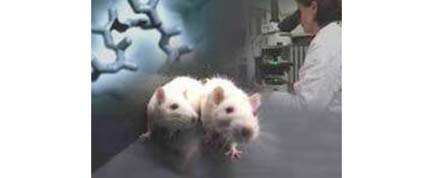Simple Injection Shows Promise for Treating Paralysis

Paralyzed lab rodents with spinal cord injuries apparently regained some ability to walk six weeks after a simple injection of biodegradable soap-like molecules that helped nerves regenerate.
The research could have implications for humans with similar injuries.
"It will take a long time, but we want to offer at least some improvement, to improve quality of life for people with these injuries," materials scientist Samuel Stupp at Northwestern University in Evanston, Ill., told LiveScience. "Anything would be considered a breakthrough, because there's nothing right now."
The soap-like molecules contain a small piece of laminin, a natural protein important in brain development. After these molecules are injected into the body, they react with chemicals there, assembling themselves instantly into scaffolds of super-thin fibers just six billionths of a meter wide, roughly a hundredth a wavelength of orange light. They biodegrade after roughly eight weeks.
The scientists experimented with their molecules on dozens of mice and rats that experienced spinal cord injuries that paralyzed their hind legs, "the kind of very hard blow people might experience after falling off skiing slopes or getting in car accidents," Stupp said. His colleague, neurologist John Kessler, became active in this work after Kessler's daughter was paralyzed in a skiing accident.
After six weeks, damaged nerves regenerated enough for the paralyzed legs of the rodents to regain some ability to walk.
"There's a special scale to monitor how much function they regained, ranging from 0 to 21," Stupp explained. "At 21, function is perfect. At 6 or 7, limbs are just paralyzed, and the mice were just dragging them along. If you go to 9 to 12, the animal can now actually move the limbs. Not perfectly—awkwardly—but they move. So two or three points on that scale makes a huge difference."
Get the world’s most fascinating discoveries delivered straight to your inbox.
"We've been able to go from a 7 to a 9 in the mouse, and in the rat, the highest was 12," he said. The findings are to be presented today at a meeting of the Project on Emerging Nanotechnologies in Washington, D.C.
The researchers are currently in talks with the FDA regarding their work and hope to start phase I clinical trials (for toxicity and safety testing) in humans two years from now, Stupp said. The idea he and his colleagues have for these molecules is to administer them within a day or so after spinal cord injuries, before scar tissue begins to form that can suppress healing. Past experiments have shown these molecules can actually turn neural stem cells (which might otherwise become scar cells) into neurons instead.
"Recovering every function a person had before an injury will probably be very hard," Stupp cautioned. "Even if people couldn't walk, if they could recover bladder function, that'd be a good thing. It's the first thing I'd want to recover."
The researchers now are developing versions of these soap-like molecules that could help with regeneration when it comes to other maladies such as Parkinson's disease, stroke, heart attacks, bone trauma or diabetes.
- Videos: Mouse Paralyzed and Mouse Walking
- Paralyzed Man Converts Thoughts into Action
- Partially Paralyzed Mice Walk Again

 Live Science Plus
Live Science Plus





